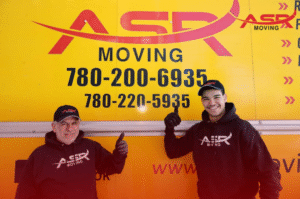Moving can be challenging at any stage of life, but for seniors, it often presents a unique mix of physical, emotional, and logistical challenges. Years or even decades spent in one home mean a deep emotional connection to a space filled with memories, routines, and familiar surroundings.
Whether the move involves downsizing, relocating closer to family, or transitioning into assisted living, it can stir up feelings of anxiety, sadness, and uncertainty.
However, with thoughtful preparation, the right resources, and a supportive environment, this transition can also offer new opportunities for comfort, safety, and a higher quality of life. In this guide, we’ll explore seven practical and compassionate tips to make moving easier, safer, and more positive for seniors and their loved ones.
1. Start Planning Early
Starting early is one of the most effective ways to reduce stress. Planning two to three months gives families time to prepare gradually, avoiding last-minute moving decisions and rushing. Use this time to create a moving checklist, coordinate tasks among family members, and visit potential new homes. You can also use this period to arrange for the transfer of medical care or prescriptions and to notify service providers. Taking a proactive approach ensures better organization and peace of mind.
2. Downsize with Sensitivity
Letting go of a lifetime of possessions is one of the most emotional parts of moving. Seniors often hold onto items not just for their function, but for the memories they represent. It’s important to approach this step with patience and empathy. Work room by room, beginning in areas with fewer sentimental items.
Encourage seniors to keep a small selection of meaningful belongings and consider gifting others to family members, donating them to local charities, or photographing cherished items that can’t make the move. This process isn’t just about reducing clutter—it’s about preserving dignity while creating a safer and more manageable living space.
3. Hire Senior-Friendly Moving Services
Choose movers who specialize in working with older adults. Certified Senior Move Managers or senior-focused moving companies in Edmonton understand the unique needs of seniors and often provide full-service options, including:
- Packing and unpacking.
- Organizing and sorting belongings.
- Donating or disposing of unneeded items.
- Setting up the new space in a familiar layout.
Look for licensed, insured professionals with positive reviews, especially those who mention senior relocation. Hiring experienced movers can significantly reduce physical strain and emotional stress, giving both seniors and families peace of mind.
4. Create a Floor Plan for the New Home
A detailed floor plan can ease the transition and prevent future complications. Before moving, assess which furniture and belongings will realistically fit in the new home. Creating a layout in advance also helps replicate familiar setups, which can provide comfort and a sense of continuity.
This is especially helpful for seniors with memory concerns or cognitive impairments. Knowing exactly where things will go also ensures that walkways stay clear and the space remains accessible for mobility aids like walkers or wheelchairs.
5. Prioritize Health and Safety
Moving day can be physically demanding, so take steps to protect the senior’s health. Prepare ahead by:
- Keeping medications, medical records, and assistive devices easily accessible.
- Packing a clearly labeled essentials bag with snacks, water, glasses, toiletries, and favorite items for comfort.
- Scheduling regular rest breaks throughout the day.
- Avoiding any heavy lifting—leave those tasks to the professionals.
It’s also wise to consult a healthcare provider before the move. They can offer guidance on managing stress, adjusting medication schedules, and minimizing physical risk.
6. Maintain Familiar Routines
Familiar routines provide emotional grounding during a time of change. Maintaining consistent meal times, bedtime, and medication schedules can help reduce feelings of disorientation and anxiety.
As you unpack, prioritize setting up personal spaces like the bedroom and living area first, using familiar items like bedding, photo frames, and books. Creating this sense of “home” as quickly as possible can ease the emotional adjustment and make the new environment feel safe and welcoming.
7. Provide Emotional Support and Patience
Above all, offer ongoing emotional support. Even when the move is the right choice, it may still feel like a loss. Seniors often grieve the end of an era, a shift in independence, or the departure from a beloved family home.
You can support them by:
- Listening with empathy and without rushing the process.
- Acknowledging their emotions rather than minimizing them.
- Involving them in decisions to maintain autonomy.
- Encouraging visits and social engagement after the move.
In some cases, counseling or support groups for older adults can provide valuable assistance. Knowing they’re not alone can make a significant difference in how they cope and adjust.
Conclusion
Moving in later life can feel daunting, but with thoughtful planning and strong support, it can also mark the beginning of a safer, more fulfilling chapter. By starting early, downsizing mindfully, hiring experienced movers, and prioritizing emotional care, families can transform what might feel like an overwhelming task into a smooth and respectful transition.
If you’re preparing for a move or helping a senior loved one navigate this change, these tips will serve as a valuable guide. Remember, small, thoughtful steps can go a long way in making the experience easier and more meaningful. If you’ve been through this process or have questions, we invite you to share your story in the comments—we’d love to hear from you.



